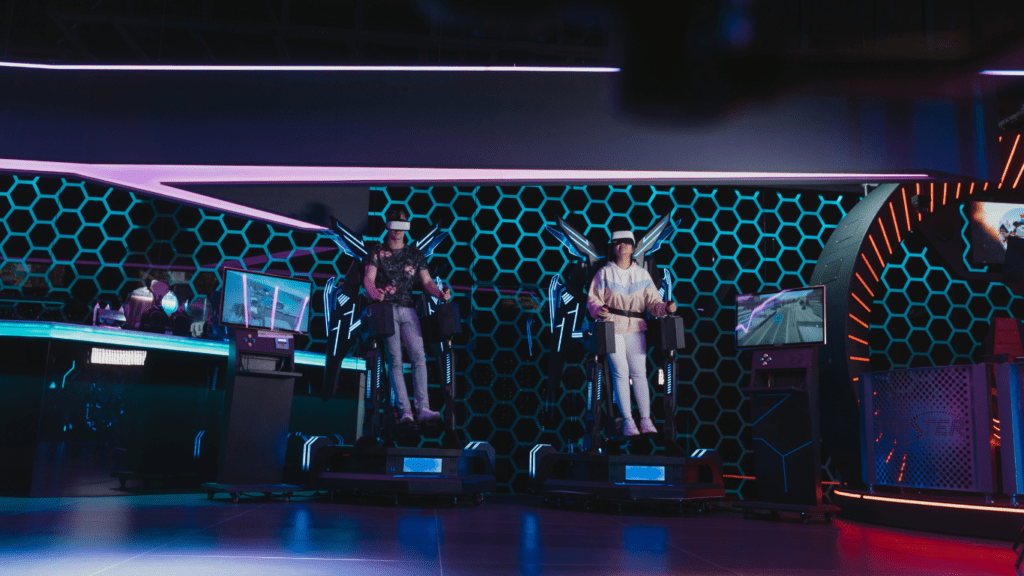Overview of the Virtual Reality Developers Conference
Why Is It Significant?
The Virtual Reality Developers Conference (VRDC) stands out as a pivotal event in the tech calendar. This annual gathering provides an exclusive look at cutting-edge VR innovations that revolutionize various sectors, from gaming to healthcare.
Industry leaders, developers, and enthusiasts converge to share insights, developments, and future directions. The conference serves not only as a showcase for new technologies but also as a platform for professional networking and collaboration.
Access to the latest VR advancements fosters a community driven by continuous improvement and groundbreaking achievements.
Keynote Sessions
- Keynote sessions at VRDC deliver valuable insights into emerging trends and technological advancements.
- Leading experts discuss current challenges and potential solutions, inspiring attendees with their visions of the future.
- Topics range from advancements in VR hardware to innovative applications in various industries.
- For example, one keynote might explore the integration of VR in surgical training, while another highlights VR’s role in creating immersive educational experiences.
- These sessions often provide actionable strategies and foresight, empowering developers to push boundaries in their work.
Industry Innovations
The VRDC is a launchpad for industry innovations, with numerous groundbreaking announcements revealed during the event. Pioneering companies showcase their latest products, ranging from high-resolution headsets to sophisticated software solutions.
For instance, new VR controllers with improved haptic feedback or platforms that offer seamless multiplayer experiences demonstrate the rapid pace of technological advancement.
These innovations not only enhance user experiences but also open new avenues for application, broadening VR’s impact across multiple domains.
Networking Opportunities
Networking opportunities at VRDC play a crucial role in fostering collaboration and knowledge sharing among professionals. Attendees can connect with peers, mentors, and potential partners during dedicated networking sessions, workshops, and informal meetups.
These interactions often lead to collaborations that drive innovation and industry growth. For example, a healthcare professional might meet a VR developer, leading to a project that revolutionizes patient therapy.
The conference facilitates meaningful exchanges that contribute to the advancement of VR technology.
Future Trends
Future trends in VR, discussed extensively at VRDC, indicate significant shifts in how the technology will evolve. Experts forecast the growing importance of augmented reality (AR) integration and the development of more immersive and intuitive user interfaces.
Ethical considerations, such as data privacy and user safety, also emerge as critical topics. These trends suggest a future where VR becomes even more integrated into daily life, enhancing both personal and professional experiences.
Key Innovations Presented
Breakthroughs in VR Hardware
Several hardware breakthroughs were unveiled. High-resolution headsets offer improved visual fidelity and immersive experiences. For example, the Varjo XR-3 features a staggering resolution of over 70 PPD (pixels per degree).
Haptic feedback gloves introduce tactile sensations to VR environments. SenseGlove, with its force feedback technology, allows users to feel digital objects. Lightweight VR headsets like the Oculus Quest 2 enhance comfort for prolonged use.
These advancements push the boundaries of what’s possible in VR hardware.
Advances in VR Software
- Software advancements showcased significant progress. Real-time rendering technologies deliver lifelike visuals.
- Unreal Engine 5 enables photorealistic graphics, elevating VR experiences.
- AI-driven interactions create dynamic and personalized environments. For instance, VirtualSpeech uses AI to provide real-time feedback in public speaking simulations.
- Cross-platform compatibility allows seamless experiences across different devices. Oculus Link connects the Quest 2 to high-end PCs, enhancing game quality.
These innovations in VR software broaden the scope of virtual interactions and applications.
Impactful Keynote Speeches

Insights from Leading VR Experts
Pioneering figures in the VR industry delivered compelling keynote speeches at VRDC, highlighting both achievements and aspirations in the field. John Carmack, a renowned programmer and co-founder of id Software, focused on the importance of hardware optimization.
He emphasized that improving refresh rates and reducing latency are pivotal for creating immersive experiences. Carmack’s detailed analysis illustrated how these technical aspects enhance user engagement and reduce VR-induced motion sickness.
Jessica Brillhart, the director of the mixed reality lab Vrai Pictures, spoke about the narrative potential of VR. She shared insights into creating meaningful and emotionally engaging content. Through examples, she demonstrated how VR can transform storytelling by making the audience an active participant.
Brillhart’s work on VR films emphasizes mimicking real-world physics and realistic audiovisual cues, which drastically improves the user experience.
Forecast on VR Trends and Technology
Experts at VRDC forecasted significant developments that will shape the future of VR technology. They discussed the integration of augmented reality (AR) with VR to create a more seamless mixed reality experience.
By leveraging AR, users can interact with digital objects superimposed on the real world. This hybrid approach aims to make transitions between virtual and physical environments more fluid.
The topic of artificial intelligence (AI) also took center stage. Industry analysts purport that AI-driven software will enhance VR applications by enabling more responsive and intelligent virtual environments.
AI can analyze user behaviors and adapt experiences in real-time, offering personalized experiences. This advancement aligns with the pursuit to make VR interactions more intuitive and hyper-realistic.
Furthermore, discussions pointed to the ethical dimensions of VR technologies. Leaders emphasized the need to address concerns about privacy and data security. As VR applications become more integrated into daily life, ensuring user data protection becomes paramount.
Development of industry standards and ethical guidelines aims to promote responsible use of VR technologies and safeguard user interests. Given these projections, the insights and trends discussed at VRDC outline a roadmap for future innovations.
The collaborative efforts of industry pioneers set a promising direction for the evolution and integration of VR technology into various facets of life.
Emerging Trends in Virtual Reality
Immersive Experience Developments
Immersive experience developments are pushing VR boundaries. Companies showcased advancements like Varjo XR-3’s high-resolution display with over 70 PPD, providing unprecedented visual clarity.
Examples like Haptic feedback gloves and full-body haptic suits bring tactile sensations to virtual worlds, enhancing realism. Lightweight headsets, like Oculus Quest 2, offer comfortable long-term use, making VR more accessible.
Audio advancements also play a crucial role in immersive experiences. Binaural audio and spatial sound technologies can create detailed auditory environments.
- Binaural audio recording techniques ensure sounds mimic how we hear in real life, providing a realistic experience.
- Spatial audio allows pinpointing direction and distance of sounds within a virtual space, adding to immersion.
The Role of AI in VR
AI significantly impacts VR by enhancing interactivity and personalization. One example is AI-driven characters and environments that adapt to users’ actions, creating dynamic and engaging experiences.
Machine learning algorithms enable virtual characters to respond naturally to users, improving realism.
AI also provides data analytics for personalized experiences. For instance, it can analyze user behavior patterns to tailor content according to individual preferences. Virtual environments adapt in real-time, offering customized interactions.
The integration of AI in VR extends to content creation. Automated tools use AI to generate realistic environments and objects rapidly, reducing development time.
Real-time rendering powered by AI, such as Unreal Engine 5, enhances photorealistic graphics, further blurring the line between virtual and reality.
AI’s role in protecting user data in VR environments cannot be overlooked. Security algorithms for encrypted data transmission ensure privacy, making VR a safer space for users.


 Alice McClurg - Content Director Alice McClurg leads the editorial team as Content Director at Jackpot Journey Spot. With a keen eye for emerging trends and a deep understanding of the gambling landscape, Alice curates in-depth articles, event highlights, and game overviews. Her expertise helps guide readers through the ever-evolving world of gambling, ensuring they stay informed and entertained.
Alice McClurg - Content Director Alice McClurg leads the editorial team as Content Director at Jackpot Journey Spot. With a keen eye for emerging trends and a deep understanding of the gambling landscape, Alice curates in-depth articles, event highlights, and game overviews. Her expertise helps guide readers through the ever-evolving world of gambling, ensuring they stay informed and entertained.
